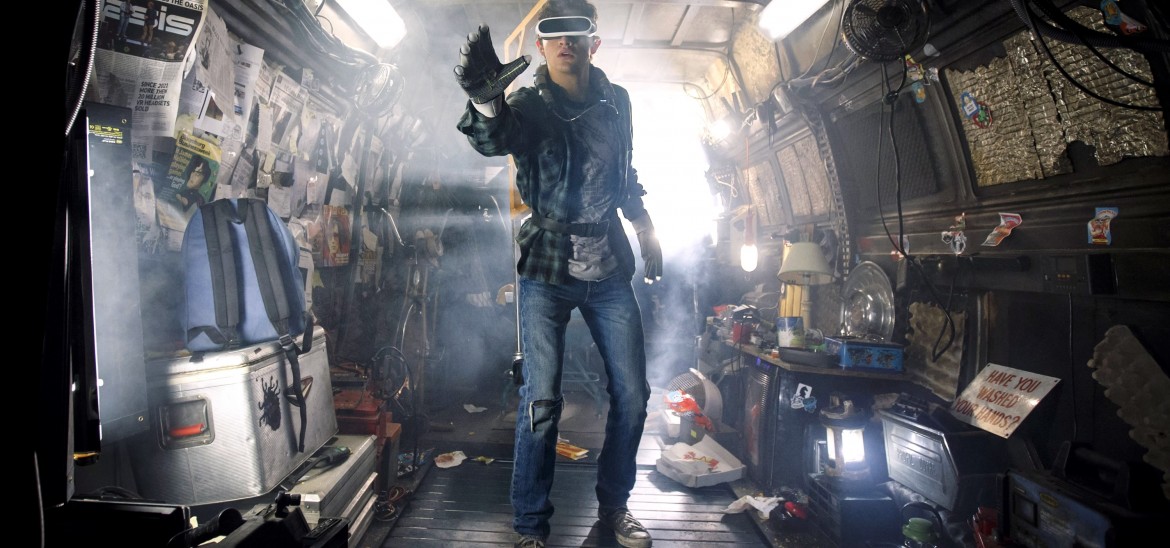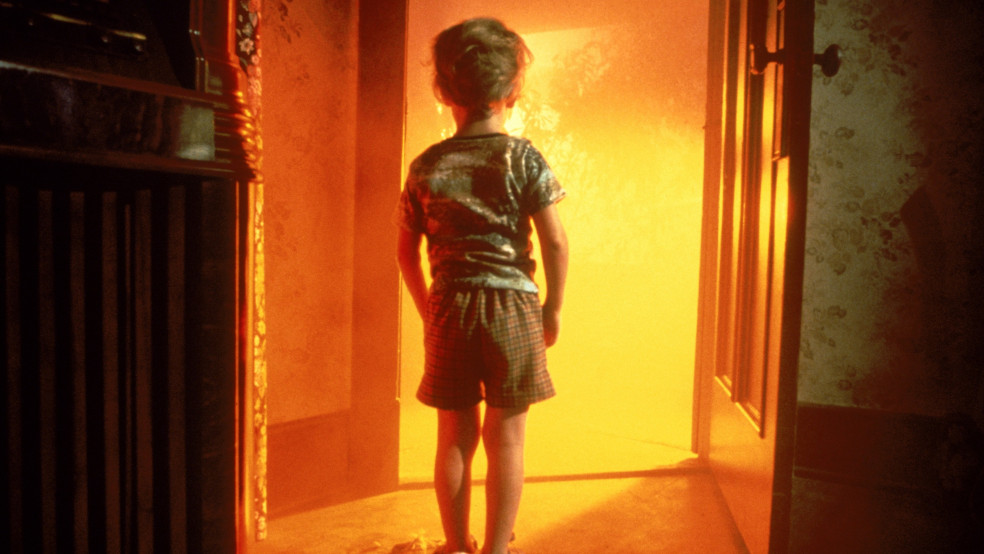Into Film Clubs
Find out everything you need to know about starting an Into Film Club.



Steven Spielberg's Ready Player One takes place in the year 2045, where the real world has become bleak and barren. Its residents, most notably young protagonist Wade Watts, spend most of their time in a virtual reality universe known as the OASIS, where the only limits are those of the imagination. Through their self-designed avatars, people can go anywhere, do anything, and be anyone they want, creating a persona for themselves entirely separate from that in the real world.
Much like Ernest Cline - the author of the book the film is based on - the creator of the OASIS, James Halliday, grew up obsessed with pop culture of the 1980s. When he dies, he initiates a game whereby control of the vast virtual universe will be handed over to the first person to complete three tasks, all centred around the pop culture that shaped and influenced him as a young person.
With its elaborate combination of motion-capture, live-action and computer animation, it is one of the most technically complicated films ever made, often resembling several movies rolled into one, an experience Spielberg has said was replicated in the three-year making of the film. Building on the work of previous films about virtual reality, such as James Cameron's Avatar, or The Matrix trilogy, whilst also visually resembling Spielberg's own A.I. and Minority Report, Ready Player One presents the audience with an overwhelming visual spectacle and attempts to explore the possibilities and dangers that come with the increasing prevalence of virtual reality.
Primarily an exhilarating, crowd-pleasing ride, the film has much to say about the modern world and where our current preoccupation with virtual spheres and nostalgia may be taking us. It is not difficult to make the leap from online personas that may or may not be accurate on the social media platforms of today, to a future in which people are creating personal avatars (that may or may not be accurate) to live a fantastical version of their lives in a virtual world, as also demonstrated in indie hit Ingid Goes West.
Such spaces can be both liberating and threatening. Bullies can be more brazen when hiding behind a digital persona than when encountered face-to-face. In the real world, Wade is lonely, socially awkward and something of an outcast. But in the OASIS, he is brave, confident, resourceful and sociable. He only knows his friends in the virtual world and has never met them in person, and does not even know what they look like.
Wade's desire for escapism is understandable. His world is beset by unemployment, poverty and overpopulation. One of the secondary themes of the film concerns how the virtual world can be used to improve things in the real world, rather than simply serve as straightforward escapism. All of this ties in with contemporary conversations about the powers of social media platforms: their empowering, liberating properties; how individuals should behave and interact on them; but also understanding who or what you can trust, and when it is better to simply step away.
The preoccupation with pop culture is similarly complex. There is tremendous fun to be had at spotting all the film references scattered across the screen. What is striking, however, is that the young protagonists do not have a popular culture of their own. They only know the second (or third) hand experiences of those that came before them. Their tasks are shaped by the video games, books, and films of a teenager growing up in the 1980s. The teenagers of 2045 have seemingly become so immersed in a digital world that they do not have their own experiences to share. Such choices can elicit fascinating discussions with young people: what of the teenagers of 2018, what might their formative pop culture be? Is it likely to last? Should it? Or should youth culture by its very nature be disposable and replaced with something entirely new in the next generation?
One positive aspect of the OASIS is its diversity. Most notable in a young character choosing a different gender for their avatar, the heroes of the film encompass a broad spectrum of physical appearances, races, and genders. It is also striking that the heroes are all young people, continuing a recurring theme in Spielberg's work of children viewing the world through different perspectives to that of adults, devoid of cynicism and selfish opportunism, and arguably more willing to come to its rescue.
Spielberg's history of working with young actors is legendary, with children and young people being at the heart of many of his most iconic films. Asked to pick out a defining moment from his over forty-year career, he often cites a well-known image from Close Encounters of the Third Kind. In it, a young boy opens the kitchen door of his suburban home to be bathed in an overwhelming orange light that is equal parts wondrous and terrifying. The source of the light is an alien spaceship that has just arrived on Earth. Whereas most of the adults see threat, for the child, the image of their arrival is pure and inspiring, opening onto possibility, rather than danger.

The moment is indicative of Spielberg's ability to see things from a child's point-of-view. Whether it is Tim & Lex experiencing the dinosaurs of Jurassic Park; Jack & Maggie finding themselves stuck in Neverland in Hook; a young Christian Bale experiencing life as a prisoner of war in Empire of the Sun; Dakota Fanning's piercing scream when seeing the destruction in War of the Worlds; Haley Joel Osment's desperate quest to be a real boy in A.I; Elliot's remarkable bond with an alien visitor in E.T; and now Wade, Samantha, Helen, Sho and Daito in Ready Player One. Spielberg's films are full of the experiences of childhood, always grounded in an emotional reality even at their most fantastical.
In Ready Player One, he once again uses the eyes of a young person to present an alternative world full of joy and awe. But, it is also a world to be treated with caution. At the end of the film, removing yourself from virtual spaces and placing yourself back in the real world brings its own special, irreplaceable essences of wonder. Like the internet of today, the world of the OASIS has much to enthral, thrill and teach. But, like the creatures of Jurassic Park, it is all ultimately a form of illusion, and like the Dream Country of The BFG, it's not somewhere one can stay in forever at the expense of reality.
Viewing 4 of 4 related items.

Find out more about our streaming service, designed specifically for UK schools.